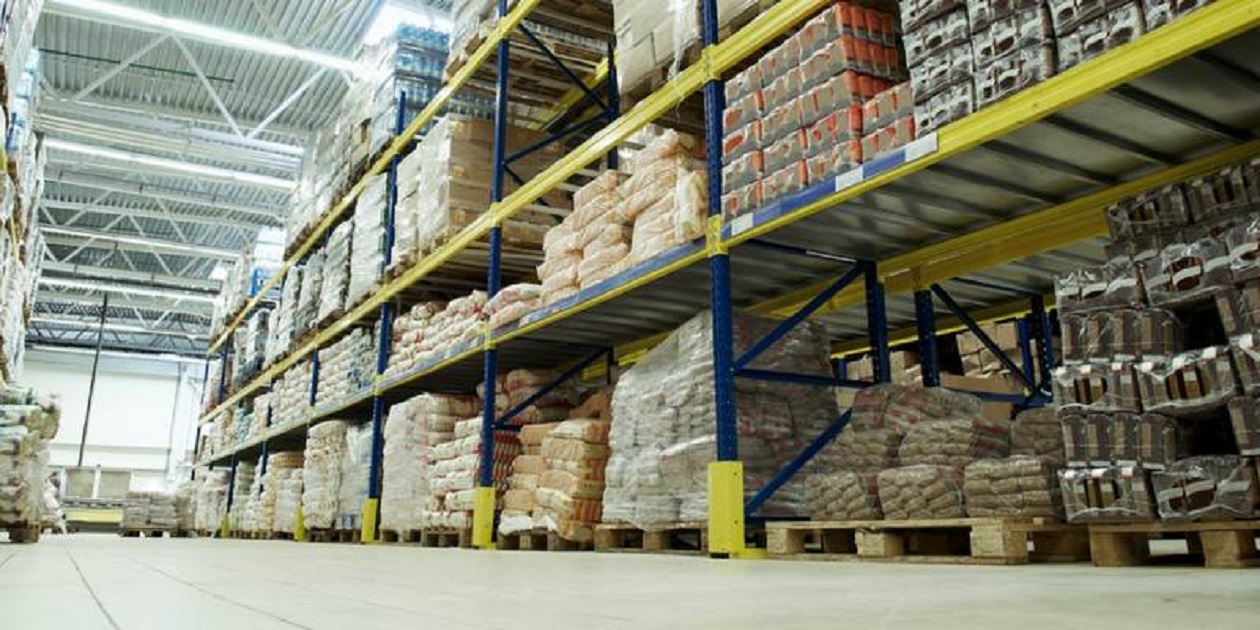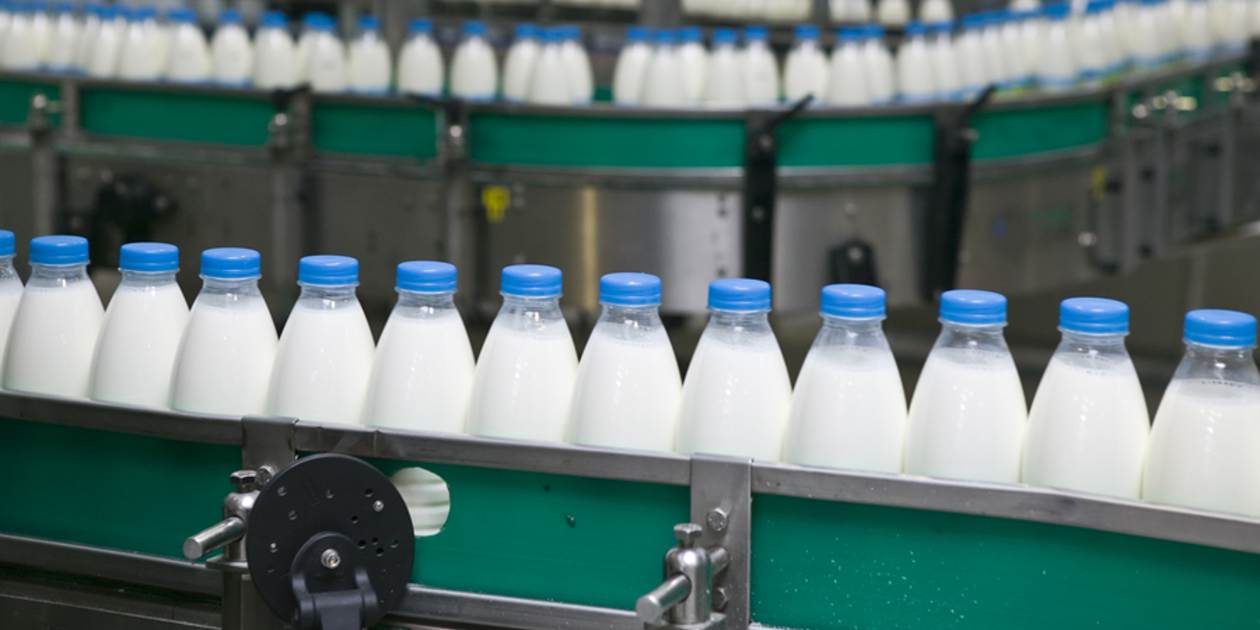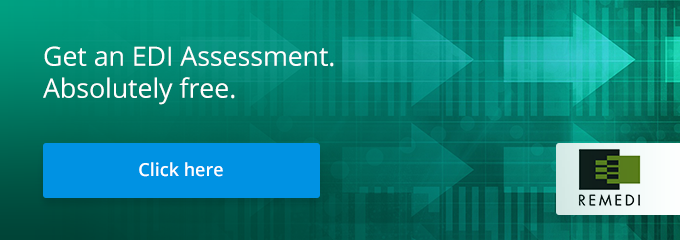
When you think of EDI systems, there are some very obvious use cases that come to mind, such as retail. However, EDI solutions are an excellent fit in a variety of industries and verticals, and the food and beverage industry is no exception.
Food and beverage EDI offers a number of benefits for manufacturers. Read on to learn how food and beverage EDI improves data accuracy, accelerates the “order to cash” cycle, saves time and money, gives you greater visibility into the supply chain, and increases regulatory compliance.
Calculate your cost. Download our free EDI Calculator to see how much you can save. 
What Sets Food and Beverage EDI Solutions Apart from Other EDI Solutions?
The first question you might have is, “Why food and beverage EDI? What is the difference between this type of EDI solution and EDI solutions used in other industries?”
Food and beverage EDI works the same way that EDI solutions for other industries do; it transmits information electronically without the need for human intervention. It utilizes the grocery products purchase order (875), and food and beverage EDI can be configured for automated import of shipment information such as PRO or tracer information and weight or cubes.
Food and Beverage EDI: Improving Data Accuracy
Imagine this scenario. A shipment from a supplier arrives at your warehouse. Your workers start unpacking the shipment, only to discover the order is not complete. You are irritated; this is a popular product, and now, you cannot satisfy customer demand.
Unfortunately, this is a common problem. If you are using manual methods to transmit data, such as email or fax, there is a high chance that data entry errors will take place. All it takes is one wrong keystroke, a misplaced comma, or the absence of a crucial digit to wreck an order’s accuracy.
“All it takes is one wrong keystroke, a misplaced comma, or the absence of a crucial digit to wreck an order’s accuracy.”
Food and beverage EDI solves that problem by reducing the need for human intervention. It digitizes data transmission; instead of a human sending information through email or fax, a computer sends data to another computer. There is no risk of information being entered incorrectly because it is already in a digital system of record.
Accelerate the “Order to Cash” Cycle with Food and Beverage EDI
Another benefit of food and beverage EDI is that the “order to cash” cycle is much faster. How does that happen? The answer lies in the digitization of information.
When you send information through EDI, it arrives at its destination almost immediately. That is not always the case with emails or faxes; while an email might arrive within seconds, that does not guarantee that someone will process it right away. We all know the problems inherent in faxing; the fax does not always go through, and when it does, it is not always legible.
“When you send information through food and beverage EDI, it arrives at its destination almost immediately.”
Immediate information transfer accelerates the order to cash cycle because orders are filled faster. When orders are filled faster, they ship sooner, meaning products are on shelves sooner. That, in turn, means customers can buy products faster, putting money in the pockets of the manufacturer and the supplier more quickly than ever before.
Food and Beverage EDI Saves Time and Money
Even if you are the top performer in your industry, you are always looking for ways to save your firm time and money. Food and beverage EDI allows you to do both of those things.
As mentioned previously, food and beverage EDI automates the information transmission process. There is no need for manual data entry. How does that save time?
“Food and beverage EDI automates the information transmission process, saving time.”
In and of itself, manual data entry takes time. Every minute your employees spend on data entry is a minute that they are not doing another, potentially more valuable activity.
Further, as the saying goes, “to err is human.” Humans make mistakes, and data entry is one task which is especially prone to errors. When mistakes happen, it takes time to correct them (which also costs money).
Automation saves money. You are not devoting resources to data entry. Also, you are not spending money on printing, filing, or storing documents, or the labor costs associated with those things. Moreover, because food and beverage EDI is far more accurate than other methods of information transfer, you are saving money because you do not have to correct errors, then pay fines because you did not uphold SLAs.

Gain Greater Visibility into the Supply Chain with Food and Beverage EDI
To paraphrase a newscast from the 1970s, “It’s 10 AM; do you know where your product is?” With food and beverage EDI, you can answer that question quickly and easily.
Food and beverage EDI gives you greater visibility into your supply chain. Here is how. EDI solutions automate the transmission of advance ship notices (ASNs). These documents contain information on when your order has been shipped as well as what products are contained in the shipment.
“Food and beverage EDI gives you greater visibility into your supply chain.”
There are two benefits to greater visibility: your inventory will be more accurate, and you can trace where your products originate. The knowledge of when products shipped and when they will arrive allows you to plan your inventory with greater accuracy. You no longer need to order more products than you actually need simply because you are not sure when the next batch will arrive.
The second benefit of food and beverage EDI is that you can trace where your products originated. ASNs contain information on the origins of your products. In the event of a recall, you can trace the shipment back to its source, which makes the recall go faster and more smoothly.
Increase Regulatory Compliance with Food and Beverage EDI
The food and beverage industries are highly regulated, and for good reason – consumers want to be able to trust that what they are eating and drinking is safe. To maintain compliance with regulations (and to shore up consumer confidence), food and beverage EDI is essential.
One of the cornerstones of legislation for the food and beverage industries is traceability. Manufacturers must be able to trace where raw supplies came from to satisfy regulatory requirements. If they cannot meet those requirements, two things happen: they cannot quickly and effectively recall food and beverage products, and consumers could become sick or even die.
“Manufacturers must be able to trace where raw supplies came from to satisfy regulatory requirements.”
With food and beverage EDI, you gain greater visibility into your supply chain, which enables you to comply with regulations. Consider an example. Suppose you are a cereal manufacturer, and you have just received your latest shipment of flour from your supplier.
Unbeknownst to anyone, the flour is contaminated. It takes five people falling ill in three states to determine that your cereal, specifically the flour within it, is the culprit. Aside from the fact that this is an epic public relations disaster, you have to pull those products from the shelves now before you face enormous fines.
“Food and beverage EDI gives you greater visibility into your supply chain, enabling regulatory compliance.”
Because your company uses food and beverage EDI, you are able to trace the contaminated flour back to its source. You also know which of the products contain that flour, which makes it easier to pull them off the shelves. The recall process goes much faster and more smoothly than it would if you did not have this information in a centralized location.
Blockchain and Food and Beverage EDI: Increasing Traceability in the Supply Chain
Thanks to developments in technology, increasing traceability in the supply chain has become easier than ever before. The combination of blockchain and food and beverage EDI boosts visibility to a granular level, which makes it easier to comply with regulations.
Blockchain is a set of digital, distributed ledgers. Everyone who is a signatory to the ledgers can see all the activities within that ledger. There are a number of exciting use cases for blockchain in the food and beverage industry, ranging from coffee growers to major retailers such as Walmart.
“The combination of blockchain and food and beverage EDI boosts visibility at a granular level.”
Blockchain is not meant to replace any EDI solution; rather, it can complement it. Food and beverage EDI solutions can work with blockchain to gather information on where a shipment originated. At every step of the supply chain, more information is added, giving everyone greater visibility into the state and location of the shipment.
Greater visibility leads to greater regulatory compliance. When you know exactly where your shipment came from, down to the soil it was grown in, you have the information you need to keep consumers safe.
The food and beverage industry has the same challenges as many others: the need for efficiency, cost savings, and complete regulatory compliance. Food and beverage EDI helps you meet those challenges by automating data transfer. Get an EDI Assessment. Absolutely free.



